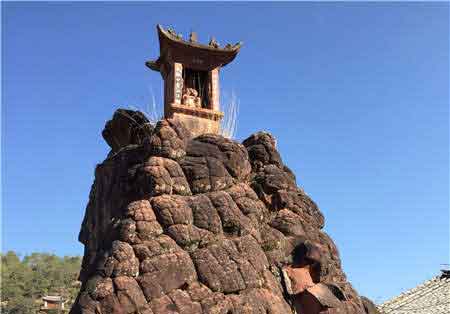Sutra streamer: Symbol of Tibetan culture
The sutra streamer, a flag made of cloth, silk or handmade paper with Buddhist scriptures on it is believed to bond human and God in Tibetan culture.
According to the Tibetan custom, the sutra streamer is painted in five colors in the order of blue, white, red, green and yellow, symbolizing the blue sky, the white clouds, the red flame, the green water and the yellow earth respectively, corresponding to the five elements of water, metal, fire, wood and earth of the universe.
The sutra streamer became popular in the 12th century when the monasteries of the Kargyu Sect of Tibetan Buddhism hung sutra streamers to spread its creed.
The sutra streamer is also called the "wind-horse flag". It is believed that the guardian gods of mountains and rivers make inspections by horses and wind in the snowy mountains, forests, prairies and valleys to ward off evils and ensure peace on the plateau.
The sutra streamer is usually tied on the top of Tibetan people's houses, temples, tents and auspicious pillars. It is a symbol of the natural environment and culture of the Tibetan-inhabited areas.
When nomadic herdsmen move from place to place in search of water and grass, they will hang up sutra streamers first after pitching their tents to pray for blessing from the surrounding deities. Pilgrims usually carry sutra streamers during their journey across mountains and rivers to pray for protection. People living on riverbanks, in the forests or valleys hang sutra streamers high to show their devout respect to the gods of mountain and water. Sutra streamers in Tibetan monasteries symbolize monks gratitude toward the Buddha and saints. Even yaks wear sutra streamers on their horns to pass their owners’ respect toward Mother Earth and pray for good harvests.
Before the Tibetan New Year or Losar, every Tibetan family will make and buy new “sutra streamer trees” and select a good day to replace the old with the new ones on the roofs or mountaintops to pray for good harvests, good luck and happiness for the coming New Year.
Your Comment
Name E-mailRelated News
-
;
-
-

-
A slice of ancient folk culture
It is only accessible after an hour's drive up a tortuous mountain road, but is the best preserved market town along the Tea-Horse Road.
-
-
-

-
Lhasa gets ready for Chinese New Year and Losar
Cultural activities with the theme of “One Chinese Family, Sharing the warmth of the Chinese New Year and Losar” kicked off in Lhasa on Jan. 10.
-
Based in Lhasa, Tibet Vista is a Tibet travel agency that specialized in Tibet permit, and Tibet tours for both private and group travelers at a local price!
•4 Days Lhasa City Group Tour from USD 460 •8 Days Everest Base Camp Group Tour from USD 850 •15 Days Mt.Kailash Group Tour from USD 1780 •2016 Tibet Train Tours from Beijing, Shanghai, Chengdu, Xining,etc










